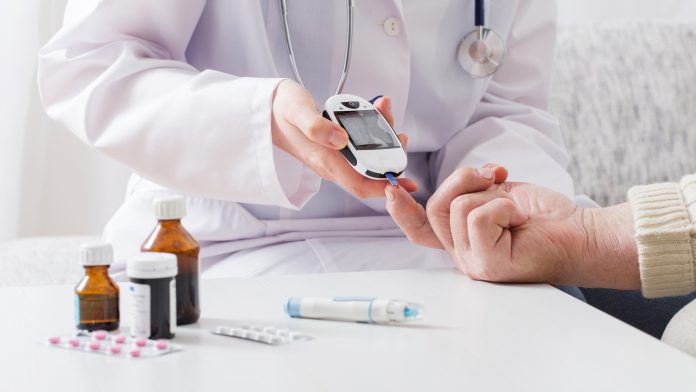
Researchers from the University of Pennsylvania may have discovered how to reduce the risk of weight gain from certain types of diabetes medication.
By uncovering the difference between two variations of a protein, the researchers possibly have learned how to eliminate the risk of weight gain from diabetes medication. This could mean that more patients with diabetes could get more effective treatment from modified thiazolidinediones, which many appear to avoid due to side effects.
Thiazolidinediones, a diabetes medication, works by reducing insulin resistance and improving insulin sensitivity; however, side effects include water retention, weight gain, chest pain and eyesight problems.
“One small, undiscovered difference between the two forms of a single protein proved to be extremely significant,” said study senior author Mitchell Lazar, MD, PhD, the Willard and Rhoda Ware Professor in Diabetes and Metabolic Diseases at Penn. “Our findings suggest a way to improve on the mechanism of action of thiazolidinedione drugs, which holds promise for eliminating the side effect of weight gain.”
The findings were published in Genes & Development.
Diabetes medication: improving patient experience
Thiazolidinediones, also known as glitazones, has indicated that it can cause weight gain in patients, resulting in a lack of uptake for this diabetes medication. They work by activating a fat cell protein called PPARgamma (PPARy) and the protein occurs in two forms, PPARy1 and PPARy2, whose functional differences have been unclear. Yet when the Penn researchers examined each form of the protein on its own, they found that activating the PPARy2 with a thiazolidinedione drug protects mice from diabetes-like metabolic changes without causing weight gain.
This diabetes medication was introduced in the 1990s and was widely popular for many years; however, more recently, the attractiveness of this drug has diminished due to the unwanted side effects. This drove the researchers to understand whether new compounds could be developed that retain the therapeutic benefits of thiazolidinediones but reduce the side effects.
Lazar and his team investigated this problem by taking a closer analytical look at thiazolidinediones’ target, PPARγ, which helps control fat cell production. The scientists studied two groups of mice: One greatly deficient in one form of the protein, PPARγ1, the other greatly deficient in PPARγ2. In the mice, the scientists showed that activating PPARγ1 or PPARγ2 with a thiazolidinedione had an anti-diabetic effect in each case, protecting mice from the metabolic harm of a high-fat diet.
The researchers revealed that activating these two forms has a subtle difference downstream effects on gene activity. More specifically, in the PPARγ1-deficient mice (in which most of the present PPARγ takes the form of PPARγ2), the thiazolidinedione treatment caused no weight gain.
The finding, therefore, suggests that it may be possible to realise the benefits of thiazolidinediones without the weight gain side effect by activating only PPARγ2 and not PPARγ1.
“We’re now studying in more detail how PPARγ1 and PPARγ2 work and how they differ, in the hope of finding ways to selectively activate PPARγ2,” Lazar said.
Diabetes: a worldwide problem
Diabetes causes a person’s blood sugar level to become too high and there are two main types, categorised by type 1 and type 2 diabetes. Type 1 diabetes causes the body’s immune system to attack and destroy the cells that produce insulin, whereas type 2 diabetes causes the body to not produce enough insulin, or the body’s cells do not react to insulin.
Statistics show that more than 4.9 million people in the UK have diabetes and 13.6 million people are now at increased risk of type 2 diabetes in the UK. It is important that existing diabetes medication such as thiazolidinediones can be modified and developed further to meet the increase of diabetes prevalence in the world.
























